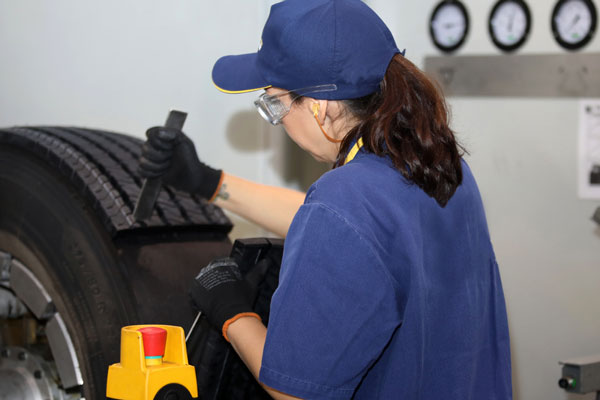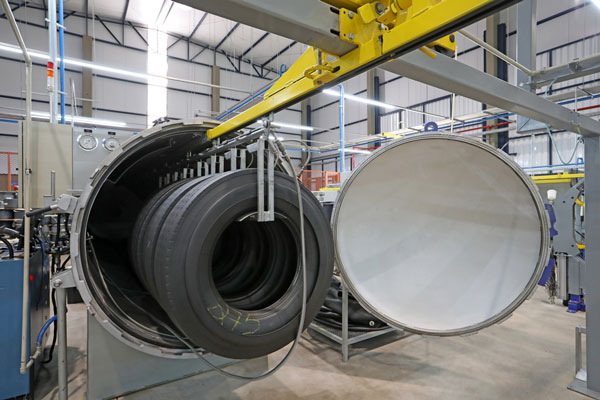The benefits of retreading and its positive impact on the work truck segment
The process of retreading tyres continues to be a strong contributing factor to promoting cost-efficiency and sustainability in vehicle fleets.
According to the Tyre Retread and Repair Information Bureau (TRIB), 89 per cent of fleets with 500 or more vehicles use retreaded tyres in their operations. Through using a quality re-tread program, fleets recognise that they can achieve a higher return on investment and lower their overall operating costs.
“Companies that opted for ultra-low-cost, low-quality new tyres have found the reduced mileage they get and non-retreadability of those casings ultimately lead to higher total costs. Retreading a premium new tyre two times can deliver 500% more miles per tyre than those one-and-done new tyres,” reports David Stevens, Managing Director of TRIB.
“Retreading lowers the total cost of tire ownership and improves a fleet’s bottom line. It’s a smart business decision that offers greater flexibility in a fleet’s supply chain and cash management strategies. As fleets become more autonomous in the future, we anticipate more small-to-medium-sized fleets will adopt retreading as it will help them optimize their operations and maximize their tyre investment,” states Ben Johnson, Director of TBR Brand and Channel Marketing for Bridgestone Americas Tyre Operations.
“As with new tyre technology, retread technology continues to evolve and push the envelope toward safer, more fuel-efficient, and longer wearing treads. Advances in new tire casing and retread sculpture design, together with advances in retread shop manufacturing technology, continue to improve the quality of retreads to the point that their safety and performance rival that of new tyres. Particularly when comparing locally sourced and manufactured high-quality retreads versus Tier 3, imported new tyres from Asia — retreads provide superior value,” said Karl Remec, business model leader for a large fleet for Michelin North America.
The growth of the medium-duty truck segment is having a clear impact on the tyre market. As this segment expands, so will the investment in retreads as a cost-saving approach.
Howie Harding, vice president, Sales for Service Tyre Truck Centre Inc explains “Medium-duty truck use is one of the fastest-growing segments today when we consider Class 7 and under. This is due to the exponential demand for final-mile delivery. The traditional box trucks, step vans, utility bodies, etc., have historically used retreads with great success. Some even run them on the steer position.”
“As this segment grows to include additional last-mile delivery fleet service providers, there is a strong business case for them to specify retreads as a preferred tire solution. Last-mile delivery fleets typically operate in high scrub and urban environments. Retreads are a cost-effective solution that offers the durability and reliability the last-mile delivery business demands,” reports Keith Iwinski, Director of Marketing, Bandag, U.S. and Canada, BATO.
Further to managing budget concerns, the retreading process can assist a business’ environmental commitments.
“I can’t talk about retreading without mentioning the massive environmental savings our industry delivers. A retread tire uses 15 gallons less oil and approximately 90-100 pounds less total material than a new tire. The U.S. and Canada tire retread industry, therefore, saves approximately 217.5 million gallons of oil and delivers 1.4 billion pounds of landfill avoidance on an annual basis,” explains Stevens.
“Retreads are often used in pick-up and delivery, refuse and other similar medium-duty truck applications where there is a lot of starting, stopping and turning. The faster wear rates are ideal for retreading because they allow fleets to maximize the value of their casing over multiple retreads, while also reducing the environmental impact,” reports Dustin Lancy, Commercial Product Marketing Manager, The Goodyear Tire & Rubber Co
Whilst the benefits are clear, a good foundation is the key in a retreading program. A knowledgeable retreader should look closely at the tyres, as they are more prone to collecting debris, leading to operational damage. The vehicles should be inspected and monitored to maximise efficiency.
“Make sure you’re using a quality casing that is proven to retread multiple times and ensure you select the right tread design and repair specs for your application. If all this is done in conjunction with a comprehensive tire maintenance program, retreads will lower your costs without increasing risk of failure,” reports Harding.
“I’ve seen customers in all segments of transportation benefit greatly from the use of retreads. Whether you’re running a fleet of medium-duty or heavy-duty truck and trailers, retreads will help you reduce your overall tire costs regardless of application.”
Individuals are encouraged to reach out to their local retreading plant for further information.
Source: Work Truck | Last-Mile’s Growing Impact on Retread Tires
4 December 2020











